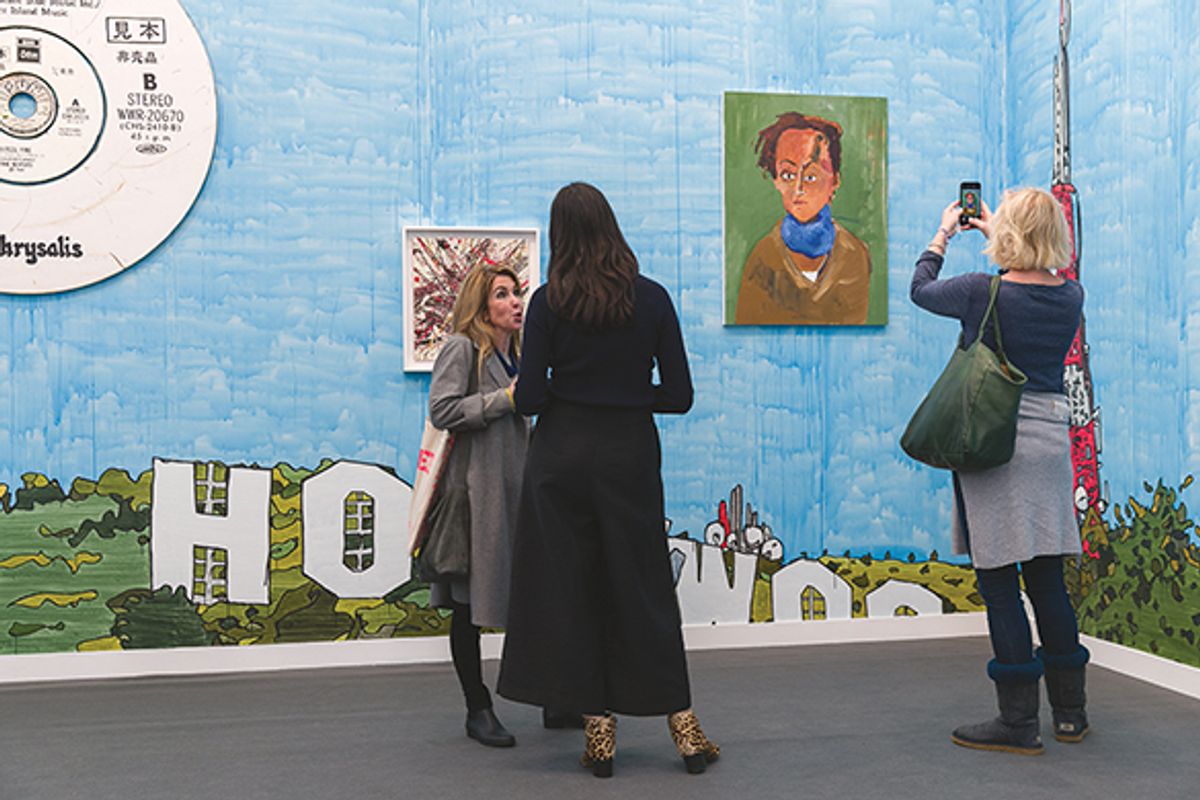The news that Pace has acquired Kayne Griffin gallery in Los Angeles, creating the new Pace Los Angeles effective in April, took many by surprise but has a certain logic to it. Pace has a huge roster of artists—113 at last count—and no space in the city. Kayne Griffin has a much smaller artist list and a beautiful space here, complete with a Skyspace by James Turrell, one of the artists the galleries share. And Pace’s pledge to keep the Kayne Griffin staff intact, with veteran dealers Bill Griffin and Maggie Kayne involved to some degree as managing partners, sounds encouraging.
But not everyone is celebrating. Los Angeles’s most important homegrown galleries, including David Kordansky, Vielmetter and Blum & Poe, are now in the tricky position of trying to maintain their market share for artists also represented by Pace, now with nine locations from New York to Seoul. And local galleries will face the same challenge whenever David Zwirner moves to its new space in Hollywood. (No opening date was available as we went to press.)
For example, Pace shows David Hockney in many locations, but LA Louver has had a long and successful relationship with him in Los Angeles, staging nearly two dozen solo shows since 1978. Pace also shares several artists with Blum & Poe: Lynda Benglis, Sonia Gomes, Lee Ufan and Yoshitomo Nara. And Pace shows one of Kordansky’s biggest artists, Sam Gilliam. Meanwhile, Zwirner shows Blum & Poe artist Shio Kusaka, 1301PE artists Diana Thater and Rirkrit Tiravanija, and Regen Projects artists Toba Khedoori, James Welling, Raymond Pettibon and Wolfgang Tillmans.
Having these mega-galleries in Los Angeles could test artists’ loyalties. The question that had people talking pre-Frieze, in between gallery openings and off the record: will Pace and Zwirner try to poach artists from local galleries the way that Hauser & Wirth, which opened its complex here in 2016, has in recent years? Pace’s press release announcing its Kayne Griffin merger tried to assuage concerns. “In addition to artists that are represented by both galleries, Pace will also continue to nurture collaborations with Los Angeles galleries with whom it shares artist representations, including Blum & Poe, David Kordansky Gallery, LA Louver, Night Gallery and Vielmetter Los Angeles,” it said.
But the history of mega-galleries expanding here suggests otherwise, with Hauser & Wirth’s Los Angeles location helping it to establish “worldwide representation of”—essentially a monopoly over the work of—artists such as Charles Gaines, whose career was supported for years by Vielmetter. (The gallery suffered another loss this month to Hauser & Wirth: Angel Otero).
One seasoned Los Angeles art dealer raises another concern. “I think a lot of artists are very loyal to their galleries,” she says. “Collectors, not so much. The bigger issue than poaching is the fact that Pace and Zwirner will be able to get in front of collectors with works by all of their artists,” including, she notes, inventory from artists already represented by a gallery that is just across town. And to get to Pace’s new Los Angeles gallery from David Kordansky, a collector needs only to walk across the street.


